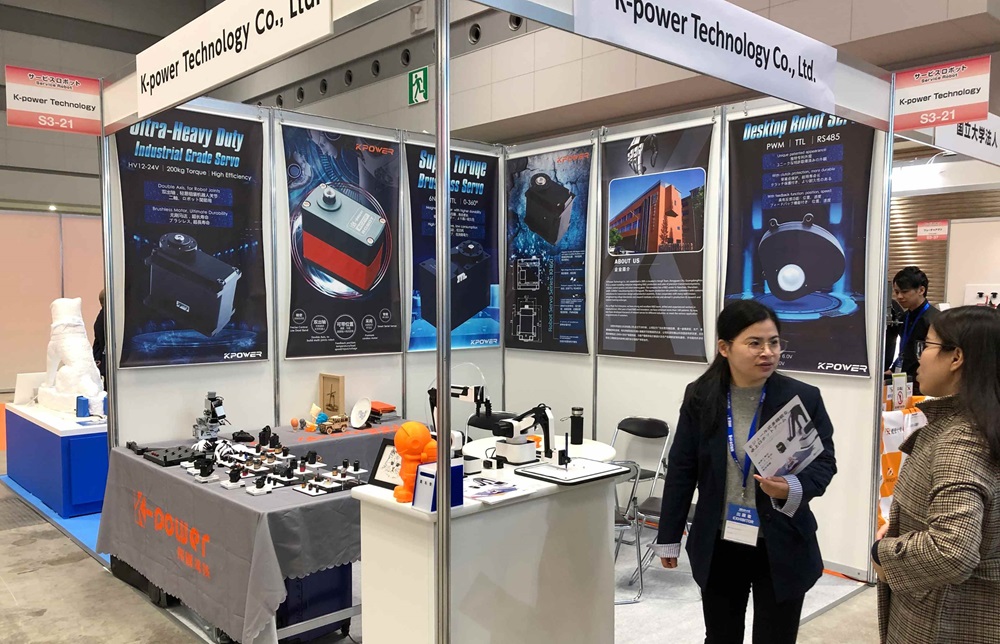Introduction: The Heartbeat of Modern Automation
Imagine a world where factories hum with flawless efficiency, robots dance with meticulous precision, and vehicles drive themselves with unwavering accuracy. Behind these marvels of modern innovation lies a powerful but often unseen component: the AC servo motor. These compact yet mighty devices have become essential in pushing the boundaries of what machines can achieve, transforming industries across the globe.

But what exactly makes AC servo motors so special? Unlike traditional motors, AC servo motors are built for precision control. They provide rapid response times, high torque at various speeds, and exceptional positional accuracy. This makes them indispensable in applications where exact movements and repeatability are paramount.
The journey of AC servo motors from industrial oddities to the backbone of automation has been driven by the relentless push for greater efficiency, productivity, and automation. From assembly lines to aerospace, their influence is profound. As we delve into the application landscape of these versatile motors, you'll find that their versatility is only matched by their ability to adapt to the most demanding tasks.
Understanding the Core of AC Servo Motors
Before diving into specific applications, it’s helpful to understand the basic working principles of an AC servo motor. At its core, a servo system comprises a motor, a feedback device (usually an encoder), and a control system. When a command signal is issued, the control system processes the required position or velocity and adjusts the motor's operation accordingly.
AC servo motors operate on alternating current (AC), typically three-phase, which offers several advantages over DC motors. They tend to be more reliable, require less maintenance, and deliver higher efficiency. Their design often includes a stator with multiple windings and a rotor equipped with either permanent magnets or windings, depending on the motor type.
Key features that set AC servo motors apart include their built-in feedback mechanisms for real-time positional data, quick acceleration and deceleration capabilities, and superior torque control. These features empower industries to accomplish precision tasks that were once thought too complex or delicate for automation.
Industrial Automation and Manufacturing
Perhaps the most prominent application of AC servo motors is in industrial automation. Manufacturing plants worldwide rely heavily on these motors to operate CNC (Computer Numerical Control) machines, robotic arms, and conveyor systems. Their ability to deliver precise, programmable movements ensures high-quality output and minimized waste.
In CNC machining centers, for instance, AC servo motors facilitate the intricate movements of cutting tools with micron-level accuracy. The precision control ensures that each component is crafted to exact specifications, whether it’s aerospace parts, medical devices, or consumer electronics. Their rapid response and high torque enable faster machining cycles, increasing throughput without compromising quality.
Robotics, too, owes much of its sophistication to AC servo technology. Industrial robots performing assembly, welding, painting, or packaging utilize multiple servo motors at joints and axes. The motors' capability to achieve precise position, velocity, and force control ensures seamless, synchronized movements. This not only boosts productivity but also enhances safety and flexibility in operations.
Photoelectric and Packaging Industries
Another fascinating application is in the packaging industry, where AC servo motors drive fast, accurate packing machinery. Food, beverage, and pharmaceutical sectors depend on these motors for high-speed labeling, sorting, and sealing tasks. Their ability to maintain consistent motion even under load fluctuations ensures the integrity of packaging lines, preventing errors and delays.
In the photoelectric industry, where positioning optical elements with utmost precision is essential, AC servo motors excel. Their quick, smoothing movements are used to align lenses, wafers, or sensors precisely, contributing to the production of high-quality electronic components and imaging systems.
Aerospace and Defense Sectors
Beyond industrial applications, AC servo motors are vital in aerospace and defense. They power high-precision components in aircraft control systems, satellite positioning mechanisms, and missile guidance radars. In these domains, the slightest deviation can have significant consequences, making the reliability and accuracy of AC servo motors invaluable.
For example, satellite antennas positioned in space require exact orientation to communicate effectively with Earth. AC servo motors, with their high-torque, precise movement, ensure these antennas are accurately aligned regardless of external disturbances. Similarly, in aircraft flight control surfaces, servo motors contribute to smooth, reliable operation, enhancing safety and performance.
Renewable Energy and Solar Tracking
Another frontier for AC servo motors is renewable energy. Solar panel tracking systems depend heavily on these motors to follow the sun's trajectory. By adjusting panel angles throughout the day, they maximize energy capture and efficiency.
AC servo motors' robustness and precise control are ideal for outdoor environments where weather conditions can be unpredictable. They can operate smoothly over long periods, maintaining optimal positions without requiring frequent adjustments or maintenance. This application showcases how servo technology extends beyond traditional manufacturing into sustainable development.
The Future Outlook: A Paradigm Shift
As industries continue to evolve towards smarter, more connected systems, the role of AC servo motors will only amplify. Emerging fields such as autonomous vehicles, advanced prosthetics, and nano-assembly are poised to depend heavily on the precise, reliable motion control these motors provide.
Innovations in motor design, such as brushless configurations, energy-efficient operation, and integrated communication interfaces, promise to make AC servo motors more adaptable and easier to integrate into complex systems. Additionally, advances in artificial intelligence and machine learning are set to enable these motors to anticipate and respond to dynamic conditions more effectively, elevating automation capabilities to unprecedented levels.
In summary, the applications of AC servo motors stretch across a broad spectrum—to manufacturing, robotics, aerospace, renewable energy, and beyond. Their combination of speed, precision, durability, and control makes them a cornerstone of modern technological progress. As we look ahead, their versatility will continue to drive innovation, transforming industries and shaping a future where machines work smarter, faster, and more accurately than ever before.
Leveraging innovations in modular drive technology, Kpower integrates high-performance motors, precision reducers, and multi-protocol control systems to provide efficient and customized smart drive system solutions.




































